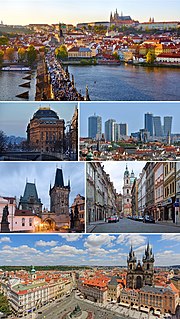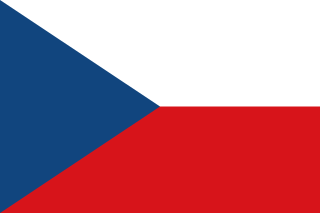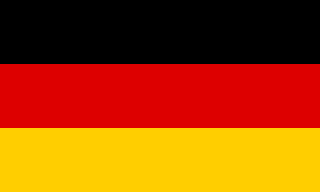
Michal Martikán is a Slovak slalom canoeist who has been competing at the international level since 1994. In 1996 he became the first athlete to win an Olympic gold medal for Slovakia since the country gained independence in 1993. In total he won 5 Olympic medals, which is the most among all slalom paddlers. He has also won the World Championship title in the C1 individual category four times. He is considered by many the greatest C1 slalom paddler alive.

Štěpánka Hilgertová is a former Czechoslovak-Czech slalom canoeist who competed at the international level from 1988 to 2017. Competing in six Summer Olympics, she won two gold medals in the K1 event, earning them in 1996 and 2000.

Pavol Hochschorner is a Slovak slalom canoeist who has competed at the international level since 1996. Competing together with his twin brother Peter Hochschorner, they are the most successful C2 paddlers in the history of canoe slalom.

Peter Hochschorner is a Slovak slalom canoeist who has competed at the international level since 1996. Competing together with his twin brother Pavol Hochschorner, they are the most successful C2 paddlers in the history of canoe slalom.

Elena Kaliská is a Slovak slalom canoeist who has competed at the international level since 1988. Competing in four Summer Olympics, she won two gold medals in the K1 event, earning them in 2004 and 2008.

Vavřinec Hradilek is a Czech slalom canoeist who has competed at the international level since 2003.

Alexander Grimm is a German slalom canoeist who has competed at the international level since 2002.

Fabien Lefèvre is a French slalom canoeist who has competed at the international level since 1998]. As a permanent resident of the United States, he has competed for his country of residence since 2013. He represented France until 2011. He won two medals at the Summer Olympics in the K1 event with a silver in 2008 and a bronze in 2004.
Alexander Slafkovský is a Slovak slalom canoeist who has competed at the international level since 1998.

Jana Dukátová is a Slovak slalom canoeist who has competed at the international level since 1999.

Corinna Kuhnle is an Austrian slalom canoeist who has competed at the international level since 2002.

Ladislav Škantár is a Slovak slalom canoeist who has competed at the international level since 1998 along with his cousin Peter Škantár in the C2 class.

Peter Škantár is a Slovak slalom canoeist who has competed at the international level since 1998 along with his cousin Ladislav Škantár in the C2 class.
The 2011 Canoe Slalom World Cup was a series of four races in 5 canoeing and kayaking categories organized by the International Canoe Federation (ICF). It was the 24th edition.
The 2009 Canoe Slalom World Cup was a series of five races in 4 canoeing and kayaking categories organized by the International Canoe Federation (ICF). It was the 22nd edition. The series consisted of 2 continental championships which were open to all countries and 3 world cup races. The athletes gained points for their results in the three world cup races plus their best result from any of the two continental championships. The women's single canoe appeared for the first time at the world cups and was an exhibition event.
The 2008 Canoe Slalom World Cup was a series of seven races in 4 canoeing and kayaking categories organized by the International Canoe Federation (ICF). It was the 21st edition. The series consisted of 4 continental championships which were open to all countries and 3 world cup races. The athletes gained points for their results in the three world cup races plus their best result from any of the four continental championships.
The 2007 Canoe Slalom World Cup was a series of four races in 4 canoeing and kayaking categories organized by the International Canoe Federation (ICF). It was the 20th edition. The series consisted of Pan American continental championships which were open to all countries and 3 world cup races.
The 2006 Canoe Slalom World Cup was a series of eight races in 4 canoeing and kayaking categories organized by the International Canoe Federation (ICF). It was the 19th edition. The series consisted of 4 continental championships, 3 world cup races and the world championships.
The 2005 Canoe Slalom World Cup was a series of eight races in 4 canoeing and kayaking categories organized by the International Canoe Federation (ICF). It was the 18th edition. The series consisted of 4 continental championships, 3 world cup races and the world championships.
The 2012 Canoe Slalom World Cup was a series of five races in 5 canoeing and kayaking categories organized by the International Canoe Federation (ICF). It was the 25th edition.






















